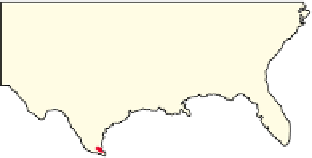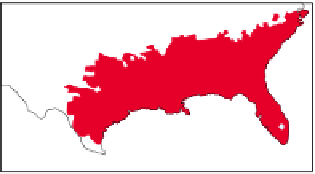Environmental Engineering Reference
In-Depth Information
information can be used to screen out potentially harm-
ful invaders.
Second,
we can inspect imported goods that are
likely to contain invader species.
Third,
we can identify
major harmful invader species and pass international
laws banning their transfer from one country to an-
other, as is now done for endangered species.
We can also require cargo ships to discharge their
ballast water and replace it with salt water at sea be-
fore entering ports, or require them to sterilize such
water or pump nitrogen into the water to displace dis-
solved oxygen and kill most invader organisms.
1918
Figure 9-13
Natural
capital degradation:
ex-
pansion of the
Argentina
fire ant
in southern states,
1918-2000. This invader
is also found in Puerto
Rico, New Mexico, and
California. (Data from
U.S. Department of
Agriculture)
2000
Economics and Ethics: Illegal Killing
or Sale of Wild Species
Some protected species are illegally killed for their
valuable parts or are sold live to collectors.
Organized crime has moved into illegal wildlife smug-
gling because of the huge profits involved—surpassed
only by the illegal international trade in drugs and
weapons. At least two-thirds of all live animals smug-
gled around the world die in transit.
Poor people struggling to survive in areas with
rich stores of wildlife may kill or trap such species in an
effort to make enough money to survive and feed their
families. Other individuals are professional poachers.
To poachers, a live
mountain gorilla
is worth
$150,000, a
giant panda
pelt $100,000, a
chimpanzee
$50,000, and an
Imperial Amazon macaw
$30,000. A
rhi-
noceros horn
may be worth as much as $28,600 per kilo-
gram ($13,000 per pound) because of its use in dagger
handles in the Middle East and as a fever reducer and
alleged aphrodisiac in China—the world's largest con-
sumer of wildlife—and other parts of Asia.
huge mounds, which look like large boils on the land,
can ruin cropland and their painful stings can render
backyards uninhabitable.
Widespread pesticide spraying in the 1950s and
1960s temporarily reduced fire ant populations. Ulti-
mately, however, this chemical warfare hastened the
advance of the rapidly multiplying fire ants by reduc-
ing populations of many native ant species. Even
worse, it promoted development of genetic resistance
to pesticides in the fire ants through natural selection.
In other words, we helped wipe out their competitors
and make them genetically stronger.
Researchers at the U.S. Department of Agriculture
are experimenting with the use of biological control
agents to reduce fire ant populations. Before wide-
spread use of these agents begins, researchers must be
sure they will not cause problems for native ant
species or become pests themselves.
Fire ants are not all bad. They prey on some other
insect pests, including ticks and horse fly larvae.
Characteristics of
Successful
Invader Species
•
High reproductive rate,
short generation time
(r-selected species)
Characteristics of
Ecosystems Vulnerable
to Invader Species
Solutions: Reducing Threats
from Nonnative Species
Prevention is the best way to reduce the threats from
harmful nonnative species because once they have
arrived it is difficult and expensive to slow their
spread.
Once a nonnative species becomes established in an
ecosystem, its wholesale removal is almost impossi-
ble—somewhat like trying to get smoke back into a
chimney or trying to unscramble an egg. Thus, the best
way to limit the harmful impacts of nonnative species is
to prevent them from being introduced and becoming
established.
There are several ways to do this.
First,
we can iden-
tify both the major characteristics that allow species to
become successful invaders and the types of ecosys-
tems that are vulnerable to invaders (Figure 9-14). Such
• Similar climate to habitat
of invader
• Absence of predators on
invading species
• Early successional
systems
• Low diversity of native
species
• Absence of fire
• Disturbed by human
activities
•
Pioneer species
•
Long lived
•
High dispersal rate
• Release growth-inhibiting
chemicals into soil
•
Generalists
•
High genetic variability
Figure 9-14
Threats to natural capital:
some general charac-
teristics of successful invader species and ecosystems vulnera-
ble to invading species.















